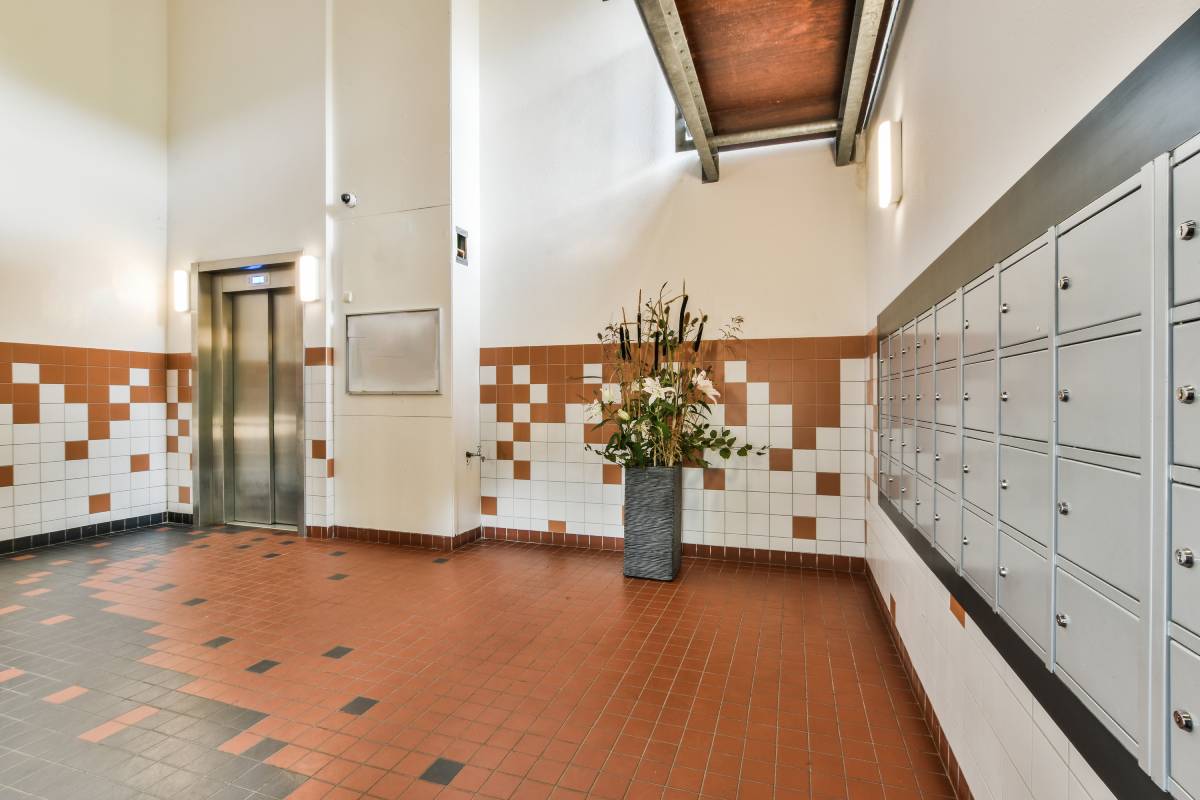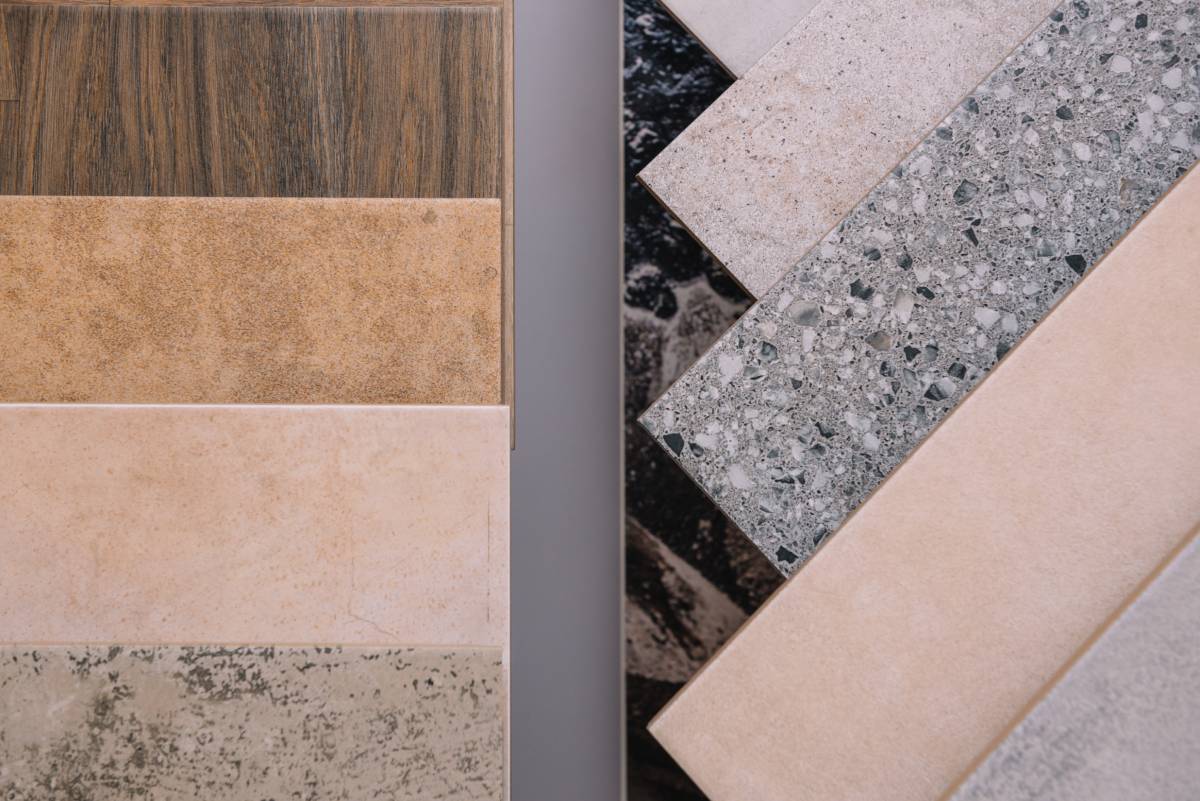Selecting the perfect floor tiles for your space is a significant decision that goes beyond mere aesthetics. The flooring you choose plays a pivotal role in shaping the ambiance, functionality, and overall appeal of a room. From considerations like durability and maintenance to style preferences and budget constraints, there are various factors to weigh in this decision-making process. In this guide, we’ll walk through the key aspects of choosing floor tiles, providing you with insights to help you make an informed and satisfying decision tailored to your unique needs.

The advantages of using floor tiles
1. Aesthetic Appeal: One of the primary advantages of using floor tiles is their aesthetic appeal. They come in a wide variety of colors, patterns, and textures, allowing homeowners and designers to choose options that complement their overall decor. Whether you prefer a classic, modern, or eclectic look, there’s a tile design to suit every taste.
2. Durability and Longevity: Floor tiles are known for their durability and longevity. They can withstand heavy foot traffic, making them an excellent choice for high-traffic areas such as hallways, kitchens, and living rooms. Unlike some other flooring materials, tiles do not wear out quickly, ensuring that your investment lasts for many years.
3. Easy Maintenance: Maintaining floor tiles is a breeze compared to other flooring options. Spills and stains can be easily wiped away with a damp cloth, and regular sweeping or vacuuming helps keep the surface clean. This ease of maintenance makes tiles a practical choice for busy households and commercial spaces where cleanliness is essential.
4. Hygienic Properties: Tiles offer hygienic benefits, particularly in areas prone to moisture and spills. Unlike carpets, which can trap allergens and bacteria, tiles are resistant to moisture and do not provide a conducive environment for the growth of mold and mildew. This makes them an ideal choice for bathrooms, kitchens, and other areas where cleanliness is crucial.
5. Versatility in Design: Floor tiles provide endless design possibilities. They can be used to create intricate patterns or laid in a simple, uniform design, depending on the desired aesthetic. The versatility in design allows individuals to express their creativity and customize their spaces according to personal preferences.
6. Temperature Regulation: Tiles have natural temperature-regulating properties, helping to keep spaces cool in warm weather. This is especially beneficial in regions with hot climates. Additionally, tiles are compatible with radiant heating systems, providing comfort in colder seasons.
7. Environmentally Friendly Options: For those concerned about the environment, there are eco-friendly tile options available. Some tiles are made from recycled materials, and certain manufacturing processes prioritize sustainability. Choosing these options can contribute to a greener and more environmentally conscious home or business.
In conclusion, the advantages of using floor tiles go beyond just enhancing the visual appeal of a space. Their durability, easy maintenance, hygienic properties, versatility in design, temperature-regulating capabilities, and environmentally friendly options make them a practical and stylish choice for flooring. Whether you are renovating your home or designing a new space, floor tiles offer a winning combination of aesthetics and functionality.

Types of floor tiles
Floor tiles come in a diverse range of types, each with its unique characteristics, making them suitable for various spaces and preferences. Understanding the different types of floor tiles can help you make informed decisions when choosing the right flooring for your home or commercial area. Here’s a breakdown of some popular types of floor tiles:
1. Ceramic Tiles: Ceramic tiles are a common and versatile choice. They are made from clay and other natural materials, then kiln-fired. These tiles come in various styles, colors, and patterns. Ceramic tiles are known for their durability, resistance to stains, and affordability, making them suitable for different rooms, including kitchens and bathrooms.
2. Porcelain Tiles: Porcelain tiles are a type of ceramic tile with added durability. They are fired at higher temperatures, making them less porous and more resistant to moisture. Porcelain tiles are suitable for high-traffic areas and are often used in both indoor and outdoor spaces. They come in an array of designs, mimicking the look of natural stone or wood.
3. Natural Stone Tiles: Natural stone tiles, such as marble, granite, slate, and limestone, add a touch of elegance to any space. Each type of stone brings unique colors and patterns, creating a distinctive look. While these tiles are durable, they may require more maintenance, including sealing, to protect against stains and water damage.
4. Vinyl Tiles: Vinyl tiles are an affordable and resilient option. They come in various styles, including those that mimic the appearance of wood or stone. Vinyl tiles are easy to install and comfortable underfoot, making them a popular choice for areas where you want a softer feel, such as bedrooms or living rooms.
5. Luxury Vinyl Tiles (LVT): Luxury vinyl tiles, or LVT, have gained popularity for their high-end appearance and durability. They often come with realistic textures and patterns that closely resemble natural materials. LVT is water-resistant, making it suitable for kitchens and bathrooms, and its versatility allows for creative designs.
6. Terracotta Tiles: Terracotta tiles bring a warm and rustic feel to spaces. These unglazed clay tiles are known for their natural color variations. While they may require more maintenance and sealing to prevent water absorption, terracotta tiles are a timeless choice, especially in areas where an earthy aesthetic is desired.
7. Glass Tiles: Glass tiles add a touch of sophistication and shine to various spaces. They are available in a wide range of colors and sizes, allowing for creative and visually striking designs. Glass tiles are often used as accent pieces in kitchens and bathrooms, creating vibrant and reflective surfaces.
8. Mosaic Tiles: Mosaic tiles are small pieces of glass, ceramic, or natural stone arranged in intricate patterns. They offer a visually appealing and customizable option for creating unique designs on floors. Mosaic tiles are often used in bathrooms, kitchens, and as decorative accents in other areas.
In conclusion, the world of floor tiles is diverse, offering options to suit different styles, preferences, and functional needs. Whether you prefer the classic charm of ceramic tiles, the luxury of natural stone, or the affordability of vinyl, understanding the types of floor tiles available can help you choose the perfect flooring for your space.

Choosing the right floor tiles for your space
Selecting the right floor tiles for your space is a crucial decision that involves considerations beyond just aesthetics. It involves assessing your lifestyle, preferences, the room’s purpose, and the practical aspects of maintenance. Here’s a guide to help you navigate the process of choosing the perfect floor tiles for your home or commercial area.
1. Understand the Room’s Purpose: Start by considering the function of the room. Different spaces have varying requirements when it comes to flooring. For high-traffic areas like entryways and kitchens, durable and easy-to-clean tiles such as porcelain or ceramic may be ideal. In contrast, for bedrooms or living rooms where comfort is a priority, softer options like carpet or luxury vinyl tiles might be more suitable.
2. Consider Style and Aesthetics: Aesthetic appeal is a significant factor in choosing floor tiles. Consider the overall style and design theme of your space. For a modern and sleek look, you might opt for large-format porcelain tiles with minimalistic patterns. If you prefer a more rustic or traditional feel, natural stone tiles or wood-look ceramic tiles could be excellent choices. The goal is to find tiles that enhance the visual appeal of the room and complement its overall design.
3. Assess Durability and Maintenance: Durability and ease of maintenance are crucial considerations, especially for high-traffic areas. Porcelain tiles, known for their toughness and resistance to moisture, are a practical choice for spaces prone to spills, such as kitchens and bathrooms. Assess the tile’s resistance to scratches, stains, and water to ensure it aligns with the specific needs of the room.
4. Think About Temperature and Climate: Climate can impact the choice of floor tiles. In colder regions, tiles with built-in radiant heating compatibility, such as ceramic or porcelain, can provide a cozy and comfortable environment. In warmer climates, tiles with natural cooling properties, like stone, may be preferred. Additionally, consider the effects of humidity on certain materials, especially in bathrooms and basements.
5. Budget Considerations: Establish a budget for your flooring project. The cost of floor tiles varies widely based on the material, design, and brand. While natural stone tiles may be on the higher end, there are budget-friendly options like ceramic and vinyl that offer durability without breaking the bank. Knowing your budget upfront helps narrow down choices and ensures you find a suitable option without overspending.
6. Explore Tile Sizes and Patterns: The size and pattern of the tiles can significantly impact the perception of space. Larger tiles can create an illusion of a bigger room, while smaller tiles or intricate patterns can add visual interest. Experiment with different sizes and layouts to find what complements the proportions of your space and suits your design preferences.
7. Seek Professional Advice: If you find the decision-making process overwhelming, consider seeking advice from flooring professionals. They can provide insights into the best materials for your specific needs, guide you on installation considerations, and offer recommendations based on their expertise.
8. Samples and Test Installation: Before making a final decision, obtain samples of your preferred tiles. Test them in the actual space to see how they look under different lighting conditions and alongside existing furnishings. Additionally, consider a test installation in a small area to assess the practical aspects of cleaning and maintenance.
In conclusion, choosing the right floor tiles involves a thoughtful evaluation of your space, lifestyle, and design preferences. By considering factors such as purpose, style, durability, climate, budget, tile sizes, and seeking professional advice, you can make an informed decision that not only enhances the visual appeal of your space but also meets the practical needs of your everyday life.

Conclusion:
In the quest to find the ideal floor tiles for your space, understanding your priorities and the specific requirements of each room is paramount. Whether you opt for the durability of porcelain in high-traffic areas, the warmth of natural stone, or the budget-friendly versatility of ceramic or vinyl, the choices are as diverse as your preferences. By carefully considering factors like room purpose, style, durability, climate, budget, and seeking professional advice, you can ensure that the selected floor tiles not only enhance the visual appeal of your space but also seamlessly integrate with your lifestyle. Remember, each tile tells a story, and the one you choose will shape the narrative of your living or working environment for years to come.






